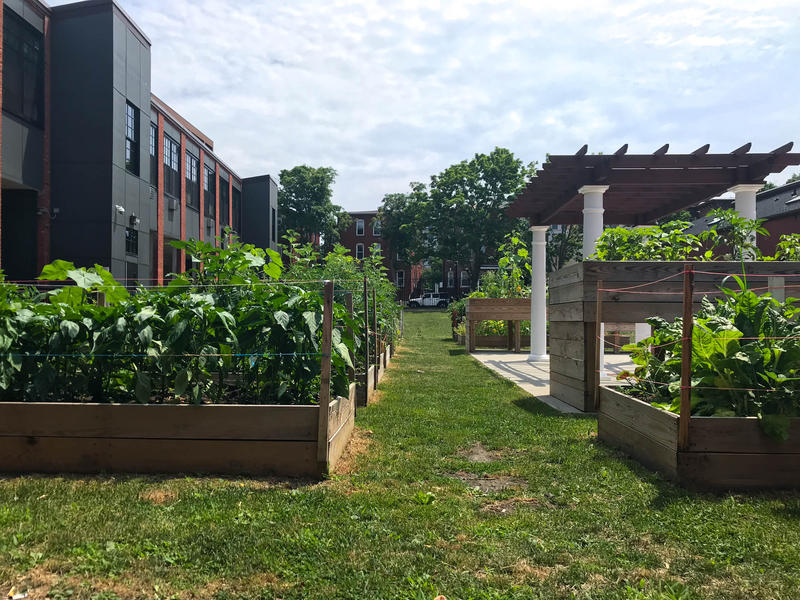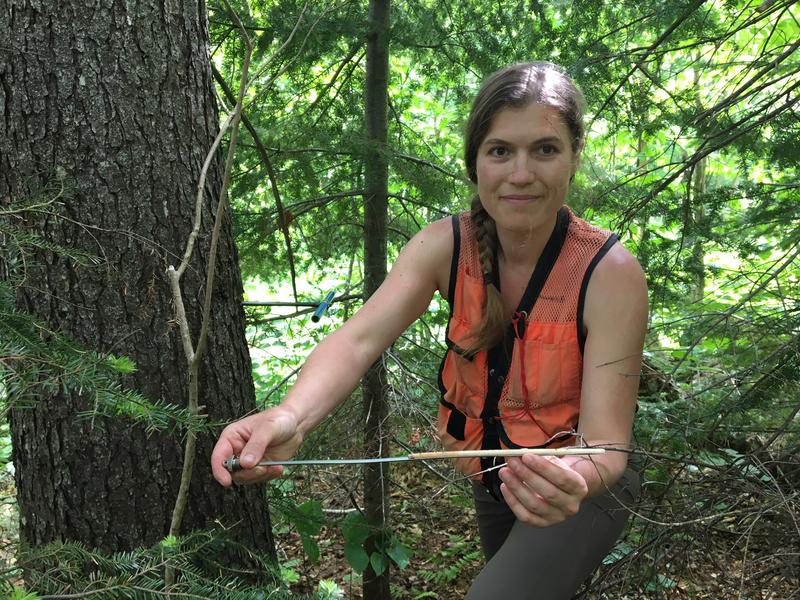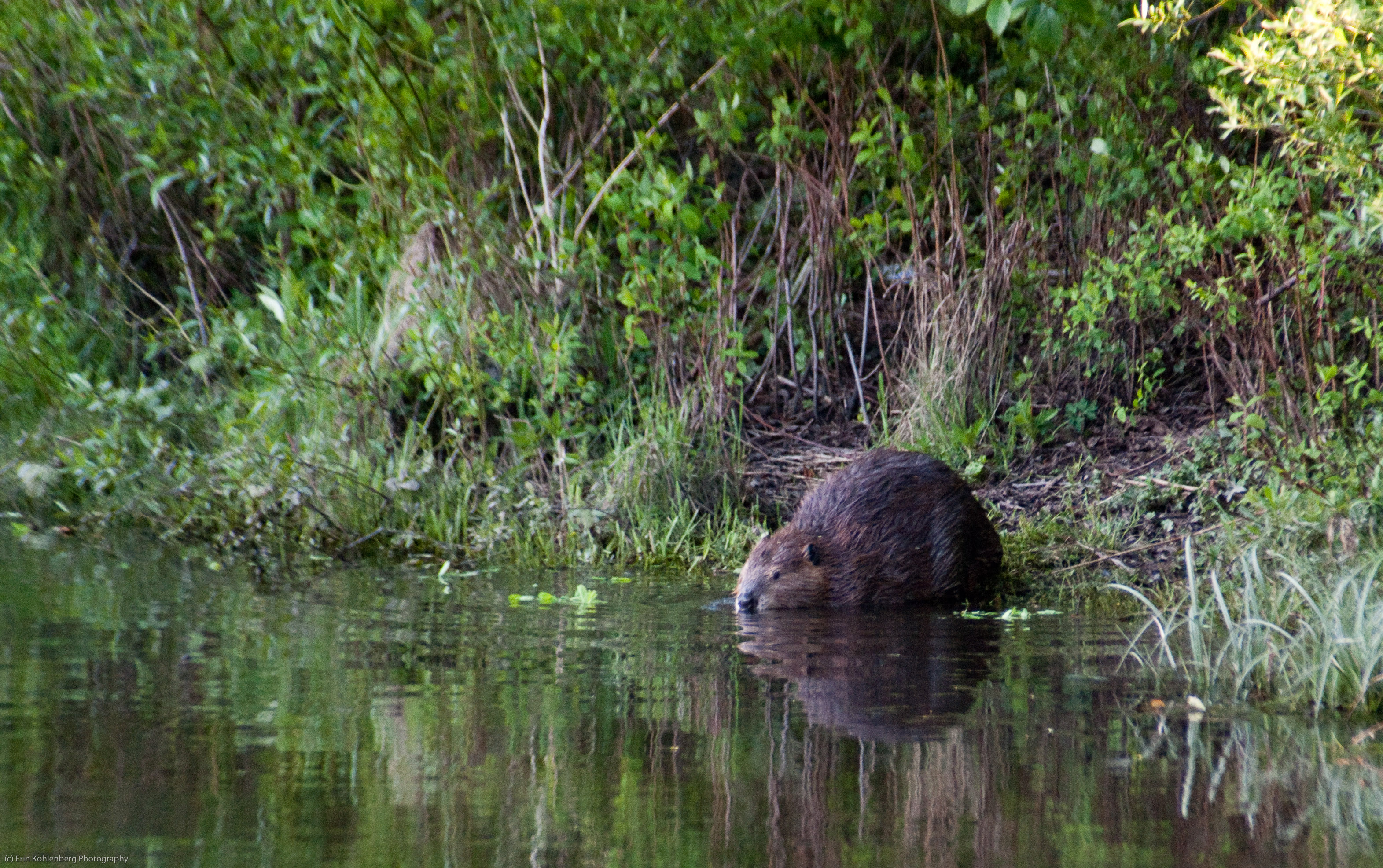Episode 105

We explore how proposed changes to the farm bill will affect SNAP programs around New England. Plus, we speak with an environmental journalist to learn how beavers have shaped our region. We explore how the response to acid rain could serve as an example for science informing public policy. And we take you on a hike in the White Mountains in New Hampshire to search for true quiet. Finally, we look at the United States’ relationship with Canada, and we visit a theater troupe who are performing along the border.
It’s NEXT.
Future of Farmers Markets and SNAP in Question

The Farmers Market at Billings Forge in Hartford. Photo by Frankie Graziano for Connecticut Public Radio
You’ve probably heard about the Farm Bill. It’s a bill that not only supports farmers, as the name suggests but also funds the Supplemental Nutrition Assistance Program or SNAP. It’s the program still commonly thought of as “food stamps” – although it’s been a decade since the name changed. Right now there’s a House version and a Senate version of the farm bill in Washington, and they differ in important ways. The version of the bill in the U.S. House changes the requirements to receive the SNAP program, making them much tougher. The Senate version does not include these changes.
A lot of people receive these benefits in our region: 1.6 million in 2017. They’re also mostly in urban centers, where there’s a dearth of healthy, fresh food available to families that are also affordable. In recent years, farmers’ markets have begun to address that need, but uncertainty around the SNAP program means that relationship could slip away. Connecticut Public Radio’s Frankie Graziano reports on what this means.
For state-by-state data about how many people in each state benefit from this program, visit the Center on Budget and Policy Priorities’ website.
House Farm Bill Proposes Work Requirements for SNAP
The House version of the Farm Bill includes a contentious provision that would change work requirements for SNAP benefits. The state of Maine is in the middle of this debate because these restrictions were first adopted in that state some time ago.
Maine Public Radio’s Willis Ryder Arnold has our story.
Acid Rain Shows Value of Science Informing Policy

Scientist Alexandra Kosiba shows a core sample from a red spruce that shows strong growth over the last decade. Photo by John Dillon for VPR
It takes a lot of work to keep our region’s ecosystems healthy. In just a minute, we’ll learn about the role one eager animal plays. But first, Vermont Public Radio’s John Dillon brings us a story about how science shaped public policy, and how that has helped our forests.
We’ll start back in the 1970s when a new term hit the public consciousness: acid rain.
Scientists found that rain 100 times more acidic than normal was harming the mountain forests of New England and New York. The pollution was linked to fossil fuel plants in the Midwest. Now, as John Dillon reports, a new study shows the impact that scientists have had on curbing the effects of acid rain.
Author Ben Goldfarb on the Impact of Beavers
Did you know that when Europeans first came to North America, there were around 400 million American beavers around the continent? By 1900, thanks to the fur trapping industry, that population was down to 100,000. And as beavers disappeared, the landscape of North America changed dramatically, and, arguably, for the worse.
Ben Goldfarb tracks the environmental effect that beavers have on the world around them, as well as their unique history, in his new book, Eager: The Surprising, Secret Life of Beavers and Why They Matter.
Read an excerpt of the book here.
Finding Quiet in the White Mountains

From a trail, you may feel like you’re deep in the woods. But the Whites are crisscrossed by highways. Airplanes fly overhead. And the cog railway chugs up and down Mt. Washington. Photo by James Napoli for NHPR
In the modern world, quiet is becoming a rare commodity. Not silence, exactly, but the absence of human-made sounds in nature. The kind of quiet you only get when you’re deep into the woods.
NHPR’s Britta Greene reports on one man’s attempt to get away from all the noise, in the White Mountains.
Exploring the Relationship between Canada and New England

The Daniel-Johnson Dam on the Manicouagan River in Central Quebec. The mile-long dam is one of 62 owned by the provincial utility Hydro-Quebec. Photo by Hannah McCarthy for NHPR
Because of New England’s shared border with Canada, our region has ties to our northern neighbors in ways that many Americans don’t. Whether united by that physical border or by some of the key industries we share, like lobsters, milk, or maple syrup.
But that relationship is under strain. A trade war, with steep tariffs on Canadian Steel leveled by the Trump administration, resulted in retaliatory tariffs by Canada on key products made in the U.S. Plus increased border security has changed how we interact with our Northern neighbors, and how they interact with New England.
To learn more, we spoke with Consul General of Canada in New York Phyllis Yaffe.
Borderline Players Perform along the Border

Chris Planetta, President of the Borderline Players’ board of directors, stands in a hallway between backstage and the dressing rooms where actors from productions past have signed the walls. This area, the stage and the front rows of seats are in Canada. Other audience seating, including the balcony, is in the United States. Photo by Amy Kolb Noyes for VPR
While that U.S.-Canada border relationship might be trickier than it used to be, many communities in New England and Canada share all kinds of resources.
Last week we heard from Vermont Public Radio’s John Dillon about a group of marathon swimmers who swam across a lake that lies in both Canada and the United States to raise awareness about international borders. This week we’re going to take you to another shared space: a theater where a troupe called the Borderline Players performs. But what makes their shows unique is the location: audience members can see the show in the U.S. or in Canada – depending on where they sit.
Vermont Public Radio’s Amy Kolb Noyes has the story.
Photo at the top of the page: Canadians can drive up to the border and take a sidewalk into the United States and up to the Haskell’s front door without going through a border checkpoint. Photo by Amy Kolb Noyes for VPR
About NEXT
NEXT is produced at Connecticut Public Radio
Host: John Dankosky
Produced with help this week from Lily Tyson
Digital Producer: Carlos Mejia
Executive Producer: Catie Talarski
Contributors to this episode: Frankie Graziano, Willis Ryder Arnold, John Dillon, Britta Greene, Amy Kolb Noyes
Music: Todd Merrell, “New England” by Goodnight Blue Moon, “Day of the Clipper” by Schooner Fare
Stream every episode of NEXT.
We appreciate your feedback! Send critiques, suggestions, questions, and ideas to next@wnpr.org. Follow us on Facebook and Twitter.
If you like what you hear, make sure to rate and review us on iTunes so other listeners can hear conversations from around New England.





